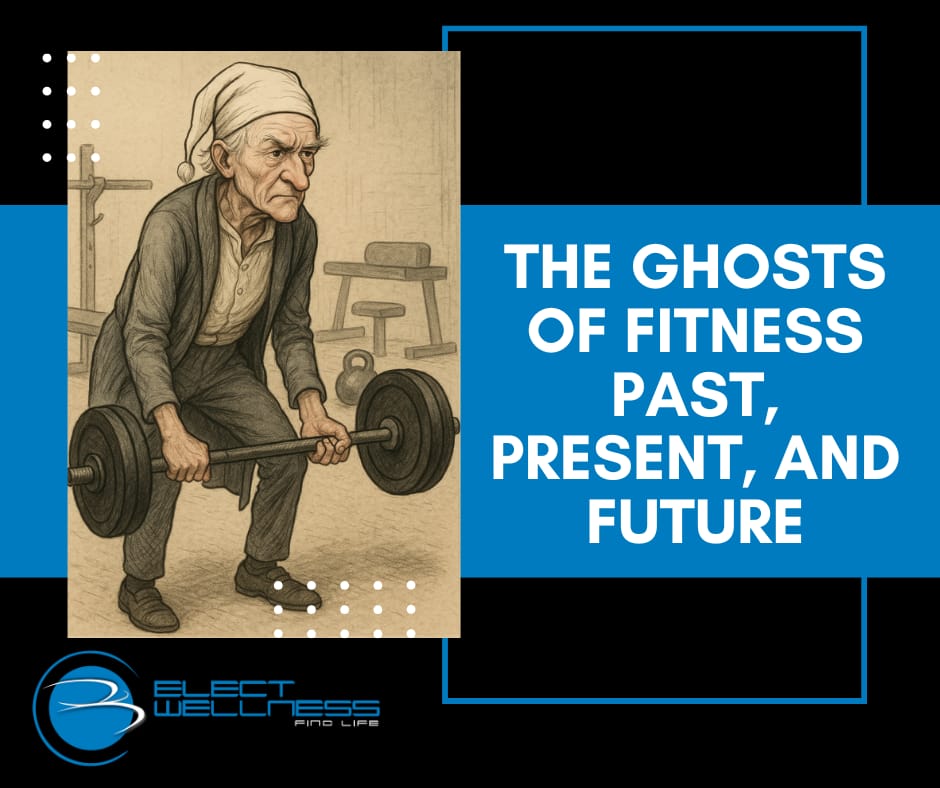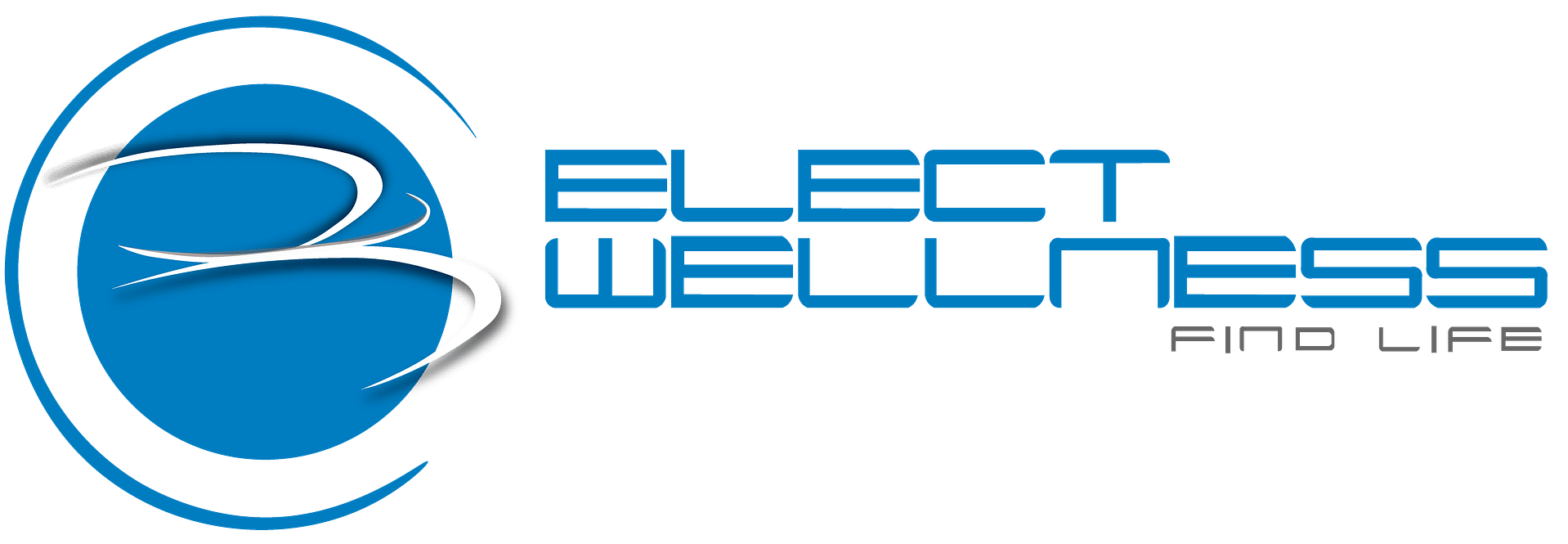
The Ghosts of Fitness Past, Present, and Future

“Bah humbug.” It’s the line we all connect with the ultimate holiday grump, Ebenezer Scrooge. But have you ever noticed that when it comes to our own health and fitness, we often treat ourselves with the same harshness Scrooge reserved for Bob Cratchit? We demand perfection, hoard our calories like miserly coins, and berate ourselves for every missed workout or extra cookie. This holiday season, instead of letting your inner critic run the show, let’s take a page from Dickens. Imagine being visited by three spirits: The Ghosts of Fitness Past, Present, and Future. Their lesson isn’t about haunting you; it’s about helping you find peace. True wellness isn’t found in punishing yourself for what you ate yesterday or stressing about the gym tomorrow, it’s about finding balance in the timeline of your health.
The Ghost of Fitness Past (Regret & Comparison)
Our first visitor, the Ghost of Fitness Past, is often the most quietly terrifying. This spirit doesn’t drag you through dark alleys; instead, it takes you back to those moments when your motivation was high: the New Year’s Resolution you abandoned in March, the weight you lost for a wedding but immediately regained, or those “glory days” of high school athletics. This spirit’s trick is the “used to” trap. We dwell on the person we used to be,” I used to be able to run three miles,” or “I used to fit into that size.” This comparison is a thief of present joy and future momentum, locking you into a paralyzing shame spiral. The past is over, and it cannot be edited. The core lesson here is simple: you cannot shame yourself into better health. Instead, look at the past year’s journey without judgment. Acknowledging what didn’t work (whether it was a restrictive diet that made you miserable or a workout routine that was unsustainable) is simply gathering data, not admitting failure. Forgive your past self for falling off the wagon or for simply being human.
III. The Ghost of Fitness Present (Mindfulness & Joy)
The Ghost of Fitness Present bursts into the room, not with silent dread, but with the scent of pine, a tray of hot cocoa, and the sound of joyous, slightly tipsy conversation. This spirit is here to help you navigate the immediate chaos of December. Its domain is the holiday party, the overflowing cookie swap, and the packed calendar that makes “finding time” feel impossible. The primary trap this spirit reveals is All-or-Nothing Thinking. You nibble one fudge square and instantly think, “Well, the day is ruined, I might as well skip the gym until January 1st and start over.” The lesson from this spirit is simple: you don’t have to choose between a healthy lifestyle and holiday joy. Embrace the 80/20 Rule. If you are hitting your wellness targets 80% of the time, the 20% dedicated to celebration will not derail you. Furthermore, reframe your exercise not as punishment for what you ate, but as movement as celebration. Move because it gives you the energy to handle the travel, the shopping, and the holiday stress. For your actionable tip, try the one plate rule. At the holiday buffet, give yourself permission to fill one plate with whatever you truly crave, including the dessert or the heaviest appetizers. Sit down, eat slowly, savor every single bite, and pay attention to when you feel satisfied. This small, intentional boundary allows for complete enjoyment without triggering the panic of endless grazing.
The Ghost of Fitness Future (Anxiety vs. Longevity)
Finally, the dark and silent figure approaches: The Ghost of Fitness Future. This spirit often feels the most daunting because it points a bony finger toward two things we dread: the overwhelming pressure of January 1st and the inevitable reality of aging. This spirit thrives on resolution panic, that frantic feeling that you must overhaul your entire life the moment the ball drops, often leading to extreme, unsustainable “New Year, New Me” diets that burn out by February. The lesson here is to choose sustainable over flashy. Instead of a terrifying vision where you starve yourself for three weeks and then quit, visualize a future where you simply prioritize a daily walk. Think of wellness as investing in “future you”. Every squat you do today is a deposit into a savings account that pays out in being able to play with your grandkids or travel without pain in twenty years. Unlike Scrooge staring at his own tombstone, you have the power to change the ending. You are the author of your health history.
God Bless Us, Every One
You’ve made it through the night. We’ve faced the ghosts of what we wish we had done (Past), learned how to savor the moment (Present), and plotted a course for a thriving, mobile future (Future). Like Scrooge waking up on Christmas morning with a full heart and a transformed perspective, you don’t have to wait for January 1st to change your path. The journey to true wellness begins the moment you decide to choose compassion over criticism. Remember the three core timelines of your health:
The Past is for learning.
The Present is for living.
The Future is for building.
This holiday season, give yourself the gift of grace. Don’t let resolution panic or the shame spiral take hold. Instead, choose small, sustainable actions that fill your future with vitality. Let Elect Wellness be your guide in setting sustainable goals, moving better, and ensuring that your health journey is filled with “God bless us, every one” joy and longevity. Contact us today to schedule a consultation and make the transition into the New Year your smoothest, most vital one yet.

Thomas C. Jensen is an exercise physiologist, nutritionist, and a nationally certified personal trainer through both the National Strength and Conditioning Association and the National Academy of Sports Medicine. He is a summa cum laude graduate of Harding University and a member of the Alpha Chi National Honor Society. As a wellness speaker and franchisor, he has shared his expertise in health and fitness with diverse audiences. He has been professionally training and consulting clients of all ages and backgrounds, for both health and human performance, for over 20 years. In March of 2004, he launched Elect Wellness, a thriving home-delivered personal training and nutrition coaching company, which has since expanded into an effective franchise system.





































